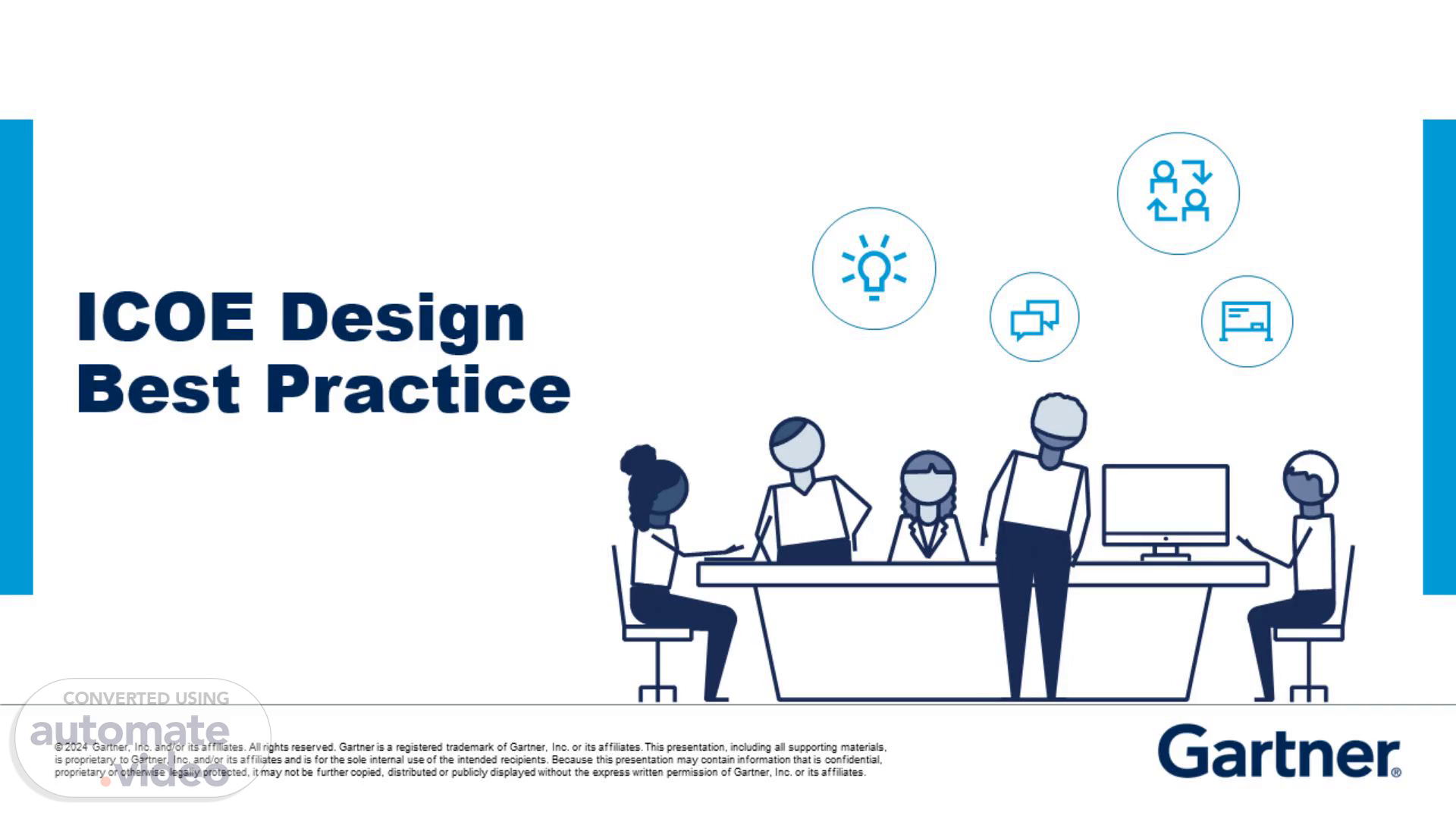
Page 1 (0s)
[Audio] ICOE Design Best Practice. ICOE Design Best Practice.
Page 2 (6s)
[Audio] Agenda To gather Business Unit knowledge Weekly peer review for Quality Assurance To excel in the process of design and build trust-based partnership with our stakeholders To understand future requirements and expectations conduct a Debriefing call for bigger projects To be up to date in trends through brand trainings.
Page 3 (33s)
[Audio] Objective To establish and execute a seamless design process founded on trust-based partnerships, comprehensive business knowledge, brand training integration, and rigorous quality assurance measures, ensuring the delivery of innovative and impactful design solutions aligned with organizational goals and values..
Page 4 (55s)
[Audio] Build Trust-Based Partnerships Clear knowledge of the Business Unit(IG, townhalls etc.) 1 2 Sharing a creative brief before starting the project with stakeholders 3 To share our best works related to the project with the stakeholders 4 Follow the process through SOP for designers to make the whole design process seamless – from requirement gathering to final delivery.
Page 5 (1m 21s)
[Audio] Initial Brief Project Title Background Describe why this project is important and how it came about Highlight any sensitivities or issues that need to be considered. Share details about the process. Describe how the project's success will be measured Objective of the task What outcome do you want as a result of this project? Target audience Describe the primary audience, and any secondary audience or other stakeholders Share any research if it exists Key messages Detail the key messages you need to share Specify what call to action you want to get your audience to act. Look and feel Specify the preferred style for your project Explain how you want your project perceived and be guided by your brand essence. What reaction do you want from your target audience? Deliverables required Be specific about what you need Describe the finished product Specify your material, quantity and distribution requirements or if any third party supplier needs to be sourced on your behalf Do you need content written or will you supply it? Graphics Do you want to incorporate images/videos? If so, do you have any guidelines for what type of images to use? Specify if you will supply images or whether you need the designer to source them Mandatory inclusions Detail the information that must be included in your project.(legal lines, logos etc.).
Page 6 (2m 42s)
[Audio] Gaining Business Unit Knowledge To make a habit of attending previous townhalls for the BUs we work with To conduct/attend brown bag sessions Continuously refer to IG pages, Jira to research about the requirement of the project and any previous work done Monitor CFBU summary/ calendar.
Page 7 (3m 2s)
[Audio] Organise brand trainings Training plan Motion Graphics /Video editing All aspects of video editing: idea generation to final product Sourcing graphics/ footages Creation of reels Newsletters and banners All aspects: layouting and research for designs How to choose imagery(icons and logos) Gifs or any other media Powerpoint presentations All aspects(ideation, planning, execution) Guidelines/ tips and tricks Being up-todate new brand specific guidelines and technologies regarding above categories Conduct internal trainings within the design team and invite other designers across BUs for external trainings Text Conduct weekly Knowledge sharing sessions within the team Text Research online or connect with CCOE for inspiration pertaining to Gartner related content eg; Linkedin, Instagram, bananatag, Inside Gartner Text.
Page 8 (4m 6s)
[Audio] Maintaining quality assurance Conduct weekly peer reviews among all designers for comprehensive design assessment One-on-one peer review with designers and then the content team Ensuring Quality: Maintains high quality work deliverable. Core Values Validation: Evaluation of soundness and methodology. Promoting Ethical Standards: identifies and addresses ethical concerns. Enhancing Clarity: Improves overall readability and communication..
Page 9 (4m 42s)
[Audio] Why Debriefing? Questions to ask What were the initial project goals and objectives, and were they effectively met? How satisfied are you with the overall design outcome and its alignment with your expectations? Were there any challenges or roadblocks encountered during the project? If so, how were they addressed and resolved? How did the design process unfold from your perspective? Were there any areas that could be improved or streamlined? Did the design solution effectively communicate the intended message or brand identity? How did stakeholders and target audience respond to the design? Were there any notable feedback or insights? Were there any specific aspects of the design that particularly resonated with you or stood out positively? Is there any additional feedback or suggestions you would like to share to enhance future design projects? To know what works and what didn’t work Understand scope of improvement in the future Suggestions on design process and quality of outcome Encountering hiccups and suggesting solutions.
Page 10 (5m 47s)
[Audio] Thank You!. Thank You!.